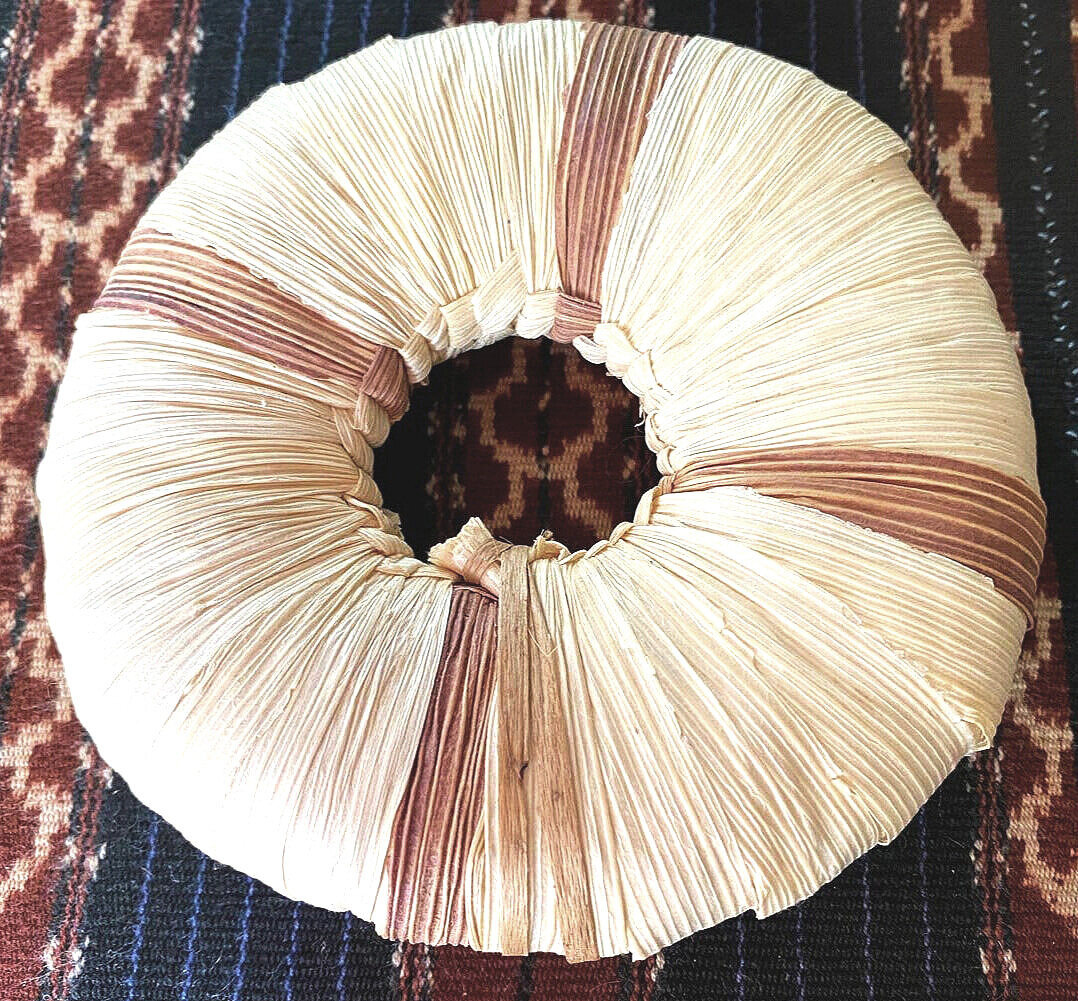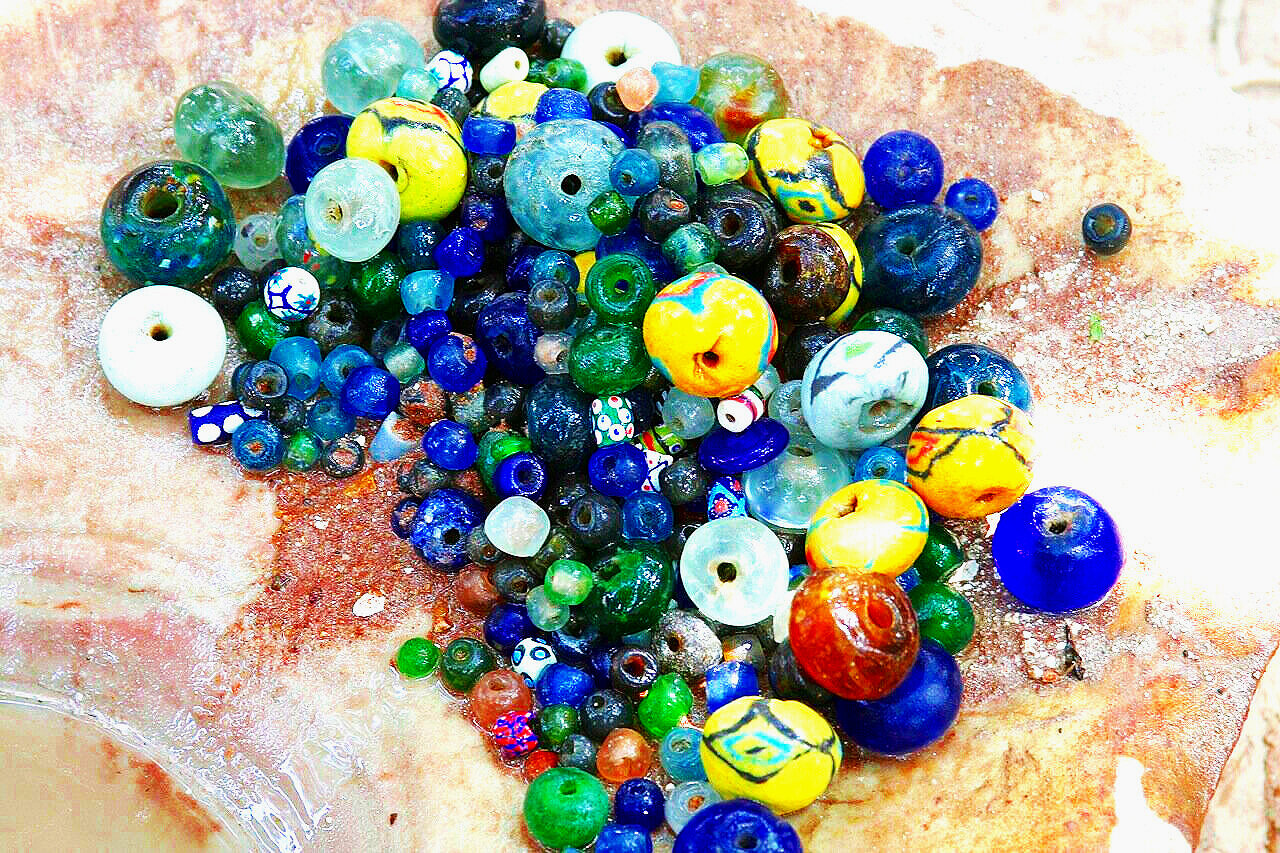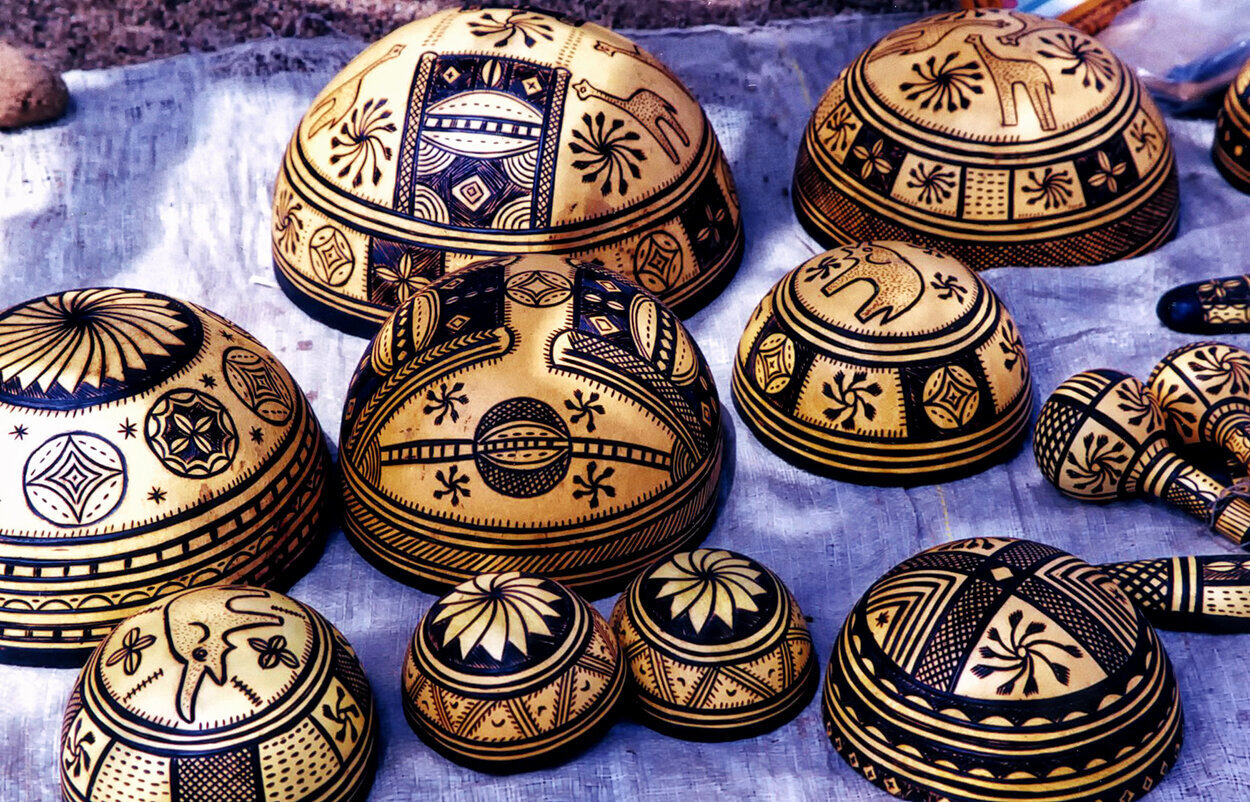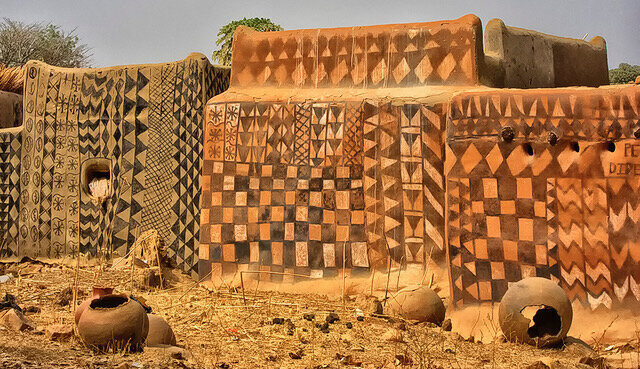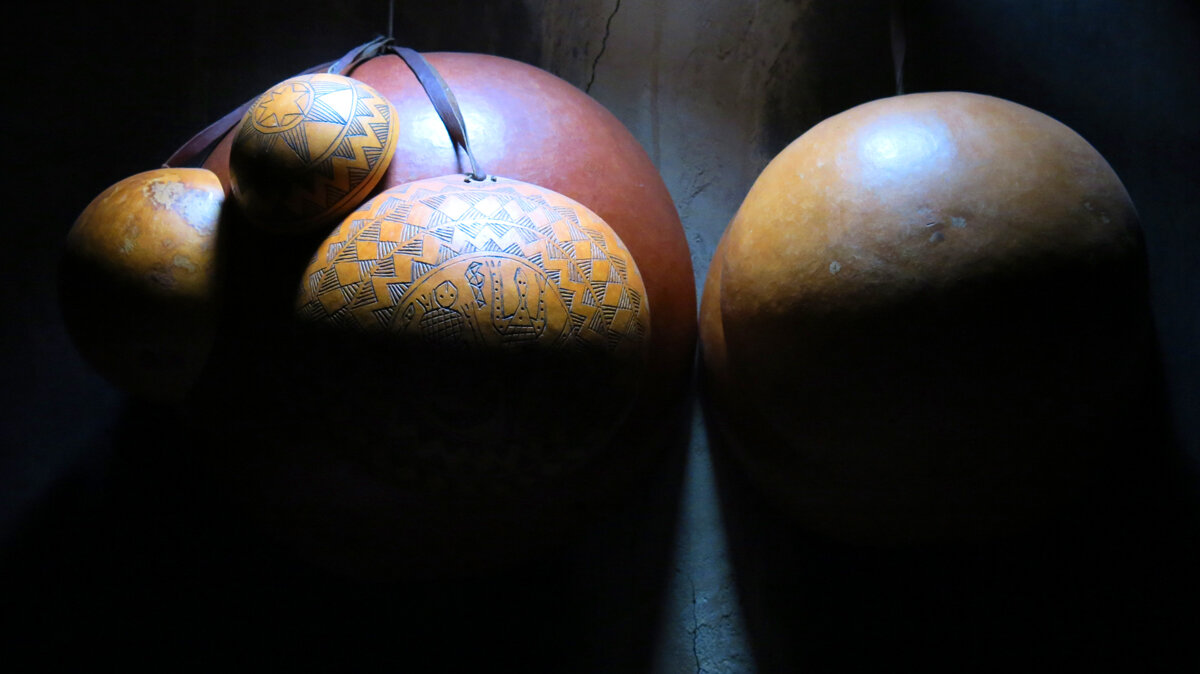
West African Calabash Bowls
Journey with a quest: Bobo-Dioulasso, Burkina Faso, to find calabash bowls
I had heard the renowned market in Bobo-Doulasso, Burkina Faso, had the best calabash bowls in the country, although they were not as elaborately patterned as I later discovered on a trip to Cameroon. Aside from wanting to see this market, I couldn’t resist the name of this town, pronounced bobo-do-lasso. A day’s drive from the capital, Ouagadougou (pronounced waaga-do-goo), Bobo-Doulasso had it all: a market filled with local products, a vibrant history, the heart of the Bobo people, and exquisite Sahelian architecture like the Grand Mosque, with its many pilasters and minarets. Aside from these draws, I was on a mission to find calabash bowls, revered by women in West Africa.
Market ladies in Nigeria wearing calabash bowls as hats (dyed purple) for protection from the sun.
Significance of the calabash bowl and how it’s used
One of the most artistic and utilitarian crafts found in Cameroon, Nigeria, Togo, Ghana, Benin, Burkina Faso, Ethiopia, and Mali is the calabash bowl made from large gourds, which grow on the ground like pumpkins or on trees. My West African guide and friend of many years, Noah Katcha, explained that the watertight gourd is considered sacred, a gift from the ancestors, and linked with the everyday life of an African woman. This is why it’s given as part of a dowry or used in initiation ceremonies. On the practical side, it’s a container for carrying water from a well to the village, used in the kitchen for storing grains or water, or toted on market days when a woman fills her bowl with products, balancing the bowl on her head with dignified grace, in order to free her hands for other tasks. There is a small woven thatch ring that she places on her head first for better balance. Women in West Africa consider the calabash as one of their prized possessions.
Small woven thatch ring placed on the head to balance the calabash bowl
The market starts in the early morning as vendors with their bundled goods arrive on crowded buses, taxi brousse (shared taxis), horse carts, or by foot. The housewares section is always crowded, so you approach it single file, trying not to engage the three or four “middlemen” who attach themselves to you, vying to be your negotiator for a small commission from the vendor. The calabash and basket vendors are easy to spot: their highly decorated bowls stacked high from the ground up appear like pillars from afar. The more expensive bowls with singed or painted designs draw a crowd. It’s hand over head sometimes to score the ones you like. What you break, you buy!
The vendors told me that a woman’s calabash bowl is a prized possession, an asset, and after marriage she will often place her bowls in high places within her mud hut or sleeve them in macramé hangings to protect them from children or store them when they are not in use. In the Fulani culture, the number of calabashes in her bedroom equal the number of years she has been married.

Calabash market in Mali - cut and dried gourds ready to be decorated.
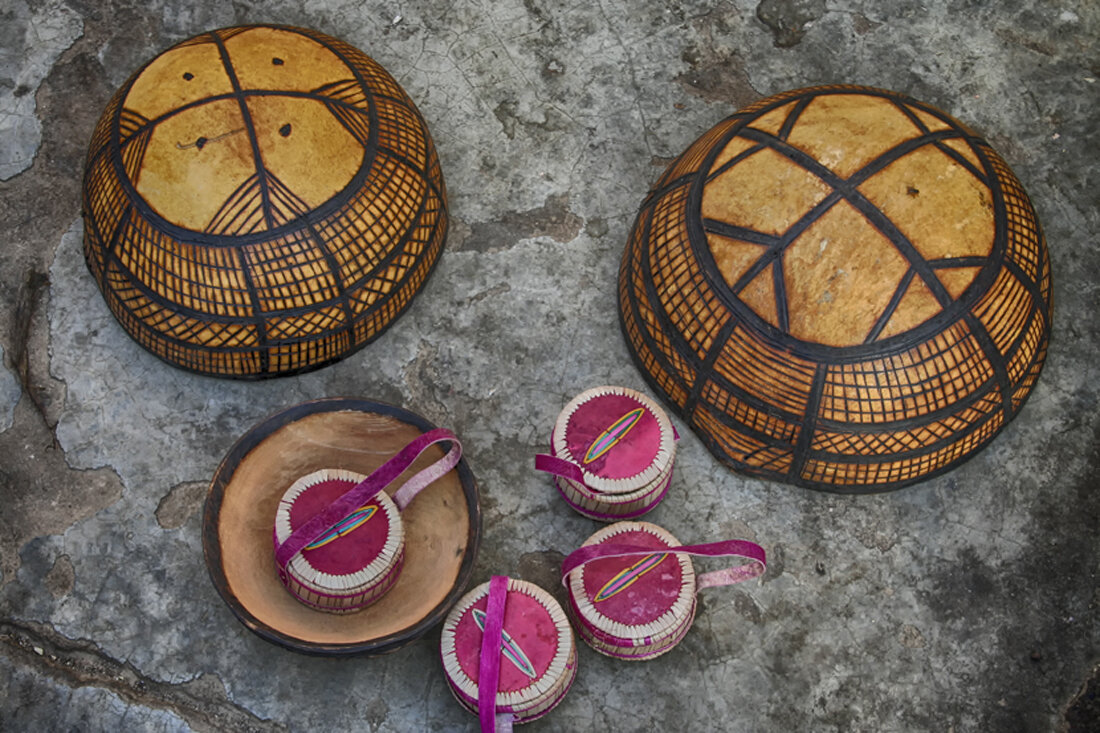
Wooden bowls with singed designs made with a hot poker.

Malian man preparing to send calabash bowls down the Niger river by boat.
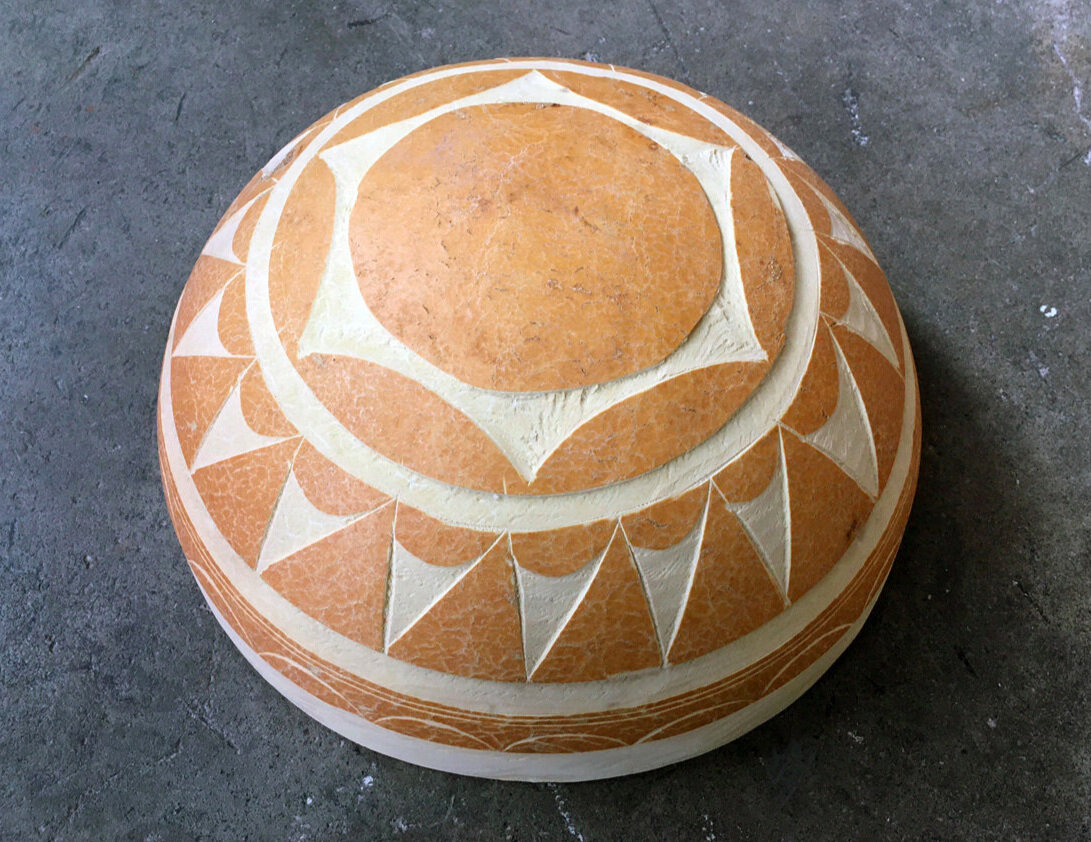
Carved calabash for Fulani wedding, Togo.

